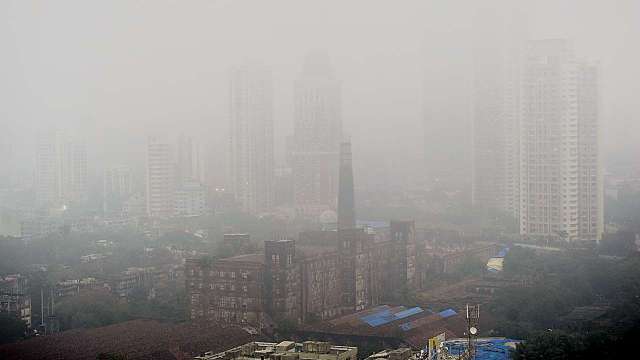Get set for those doctor visits as Delhi, Mumbai AQI reach 'unhealthy levels'
It's the case of smog is here in the national capital. On Sunday morning, ITI Jahangirpuri recorded an AQI of 235, which is very unhealthy. Other areas such as Anand Vihar and Mandir Marg also recorded levels of unhealthy air at 189 and 180 respectively, news agency ANI reported.
Delhi's air quality has been slipping repeatedly since the beginning of October. Data collated by apex body Central Pollution Control Board shows an average variation of 270 to 320 AQI every day. PM 2.5 (particulate matter of diameter less than 2.5) and PM 10 (particles with diameter less than 10 micrometers) have been sharing space amongst themselves as primary pollutants, recording their presence manifolds beyond permissible limit. As neighbouring states of Haryana and Punjab start stubble burning in their fields, Delhi is gasping for breath. Its satellite towns of Gurugram, Faridabad, Ghaziabad, and Noida are also battling 'very poor' to 'poor' air quality at the moment. In 2017, PM 2.5 breached the 999 mark in Delhi, more than three times of what is considered harmful.
One of the primary reasons behind the air pollution in the national capital region is stubble burning. Union environment minister Harsh Vardhan in a recent interview said, "It is very loud and clear that if stubble is burnt then it is not only that Delhi is going to suffer, their own states' air quality will also deteriorate. Pollution in Delhi also damages our image in the international arena," he said.
Sunil Dahiya, a senior air pollution campaigner with Greenpeace India, said, “It is also heartening to know that the Environment Minister is concerned about the country’s image in the international arena. But the concern seems rather hollow as we continue to wait for the NCAP. It is disappointing how the minister is conveniently passing the buck to the state governments and is failing miserably to stay true to his commitment of notifying the NCAP by including time bound pollution reduction goals. As per his claims, the NCAP should have been notified long time back. Multiple reports site deadlines of June 5 and August 15, 2018.”
Not just a Delhi problem
However, Mumbai isn’t far behind. On Sunday morning, the US Consulate recorded an AQI of 193, which also falls in the unhealthy category. Lower Parel, where the DNA office was located, bore a smoggy look despite the city recording a temperature of 33 degrees.
Greenpeace analysis shows that high pollution levels affected an area spread through more than a 100 km across and around Mumbai. This is due to air pollution sources dotting the Maharashtra-Gujarat coastline to the north of the city and contributing to the episode. Research has found that power plants, open burning, commercial food sector and road transport are the main sources of air pollution in Mumbai.
Similarly, Nehru Nagar area of Kanpur recorded an AQI of 220, which is also in the unhealthy level.
On October 12, the national green tribunal (NGT) told centre and the state governments, and told them to act together to reduce pollution in a time-bound manner and achieve national ambient air quality standards across the country.
Taking suo motu action on a news report on the centre's proposal to notify the National Clean Air Programme (NCAP), the National Green Tribunal (NGT) on 8th October 2018 asked the state and central governments to act together to reduce pollution in time bound manner and achieve National Ambient Air Quality Standards (NAAQS) across the country.
The court order dated October 8, 2018 mentioned that a little progress has been made on finalizing NCAP, but it’s still far from what is required, given the emergency situation we face today. The NGT observed that out of 102 nonattainment cities , plans from 73 cities were received. Of this, plans of 36 cities have been finalised, 37 are pending and 29 have not been submitted (as of September 2018).
The order by NGT clearly highlights the need of measures such as, regulating number of vehicles and their parking and plying; regulating industries based on carrying capacity; and urgency to bring the standards of air quality within prescribed norms as soon as possible.
Over 7 million people every year caused by ambient (outdoor) and household air pollution. “Air pollution alone caused 4.2 million deaths in 2016. The highest air pollution levels are in the Eastern Mediterranean Region and in South-East Asia, with annual mean levels often exceeding more than 5 times WHO limits,” a report had said.

from Daily News & Analysis https://ift.tt/2IULu8F


No comments: